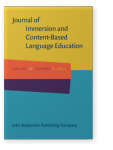Vol. 10:1 (2022) ► pp.113–138
Vol. 10:1 (2022) ► pp.113–138
Coordinating, communicating, and combining languages in local immersion education policy reform in Finland
The aim of this article is to examine local enactment of new curriculum policy, paying special attention to combining the language of instruction in the school (Finnish) and the immersion language (Swedish) in an early total one-way Swedish immersion programme in Finland at a programmatic level. The study combines ethnography with educational language policy by focusing on coordinative and communicative discourses surrounding local immersion curriculum. The participatory observation data consist of 36 hours of audio-recorded curriculum working group meetings with immersion teachers and researchers. The findings showed that the curriculum task assigned to municipalities and cities providing immersion education was extensive. They also revealed how discursively oriented policy research on immersion education opens up new ways to develop immersion education. The actual curriculum decisions implied that the Swedish portion of the immersion programme is multilingual and rich in connections between multiple languages, contesting the common belief of monolingual practices in immersion instruction.
Article outline
- 1.Introduction
- 2.Discursive institutionalism
- 3.Immersion education in a changing society
- 4.The study
- 5.Findings
- 5.1Coordinative discourses
- 5.1.1Collective sense-making about curriculum thinking
- 5.1.2Deciding on and describing the objectives and contents of immersion language by grade
- 5.1.3Making sense of multilingual language awareness in immersion education
- 5.1.4Coordinative discourses: A summary
- 5.2Communicative discourses
- 5.2.1Consensus on horizontal and vertical cooperation
- 5.2.2Subject-specific language awareness
- 5.2.3Communicative discourses: A summary
- 5.1Coordinative discourses
- 6.Discussion and conclusions
- Notes
-
References
